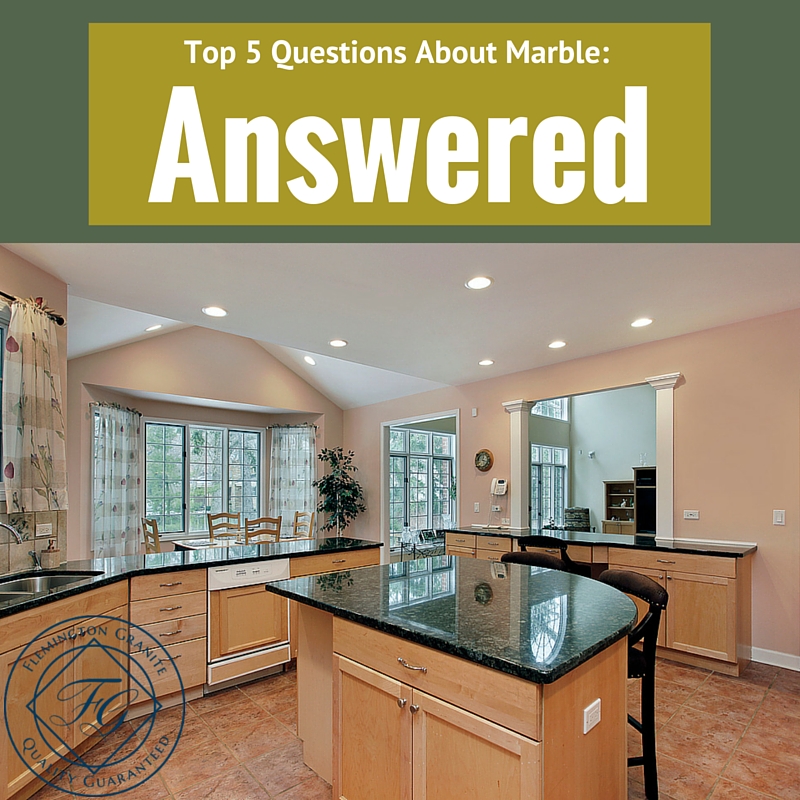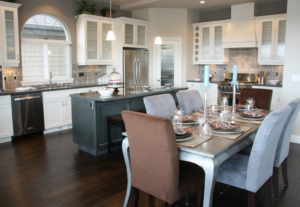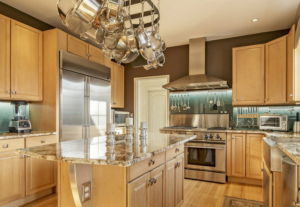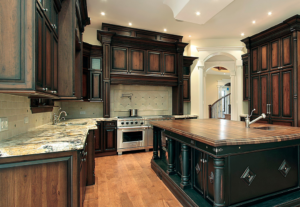
It’s obvious that marble countertops will always be in style because it’s such a classic and versatile material. Marble provides exceptional style in any kitchen, but it does have a few downsides you should consider. This natural product is very susceptible to scratching, etching, and stains if not properly cared for after the installation.
If you have your heart set on marble, consider the facts about the material before you decide if high-maintenance is agreeable for you.
What exactly is marble?
The unique marble slabs are actually a porous metamorphic stone that becomes more dense from the heat and pressure in nature. Mineral deposits take on a unique veining pattern throughout each piece, making every product a genuine one-of-a-kind.
Due to the calcium carbonate element, it is very sensitive to acid and will etch from exposure. However, it does have an advantage with the strength, heat resistance, and natural durability against dents and chips.
Which colors are available in marble?
Physical appearance is the biggest advantage to marble, with guess in a wide array of colors. Neutral gray, white, and black are popular marble slab colors and are great for a more classic style, but marble countertop colors can also be found in pink, green, or yellow.
The veining is natural and may be more prominent and contrasting in some slabs. White is one of the top choices for countertop installations because it hides etching, adapts easily to surrounding decor, and it opens up any space with the brighter shade.
What kinds of finishes are available for marble?
• Polished – A high-gloss surface is created through a buffing and grinding process that enhances the intricate details of the slab. Although it is the most susceptible to damage from acidic substances, it is the least porous option.
• Honed/Matte – The process of sanding the surface makes the surface appear more smooth so that it does not show obvious flaws. It does make the surface more susceptible to stains because the pores are opened up, and the color will be slightly muted.
• Leather – Dark marbles are the most common option when choosing to give the slab a leather-like texture. It isn’t reflective but it will have a soft sheen to conceal imperfections like fingerprints.
Should marble be sealed?
Considering the vulnerability to acids and general porousness of the marble, you should consider sealing absolutely necessary. A topical sealant is going to provide a moderate level of protection, but can be damaged by heat and scratches.
If your marble is used in a kitchen application, it is smart to use a penetrating sealant to increase stain resistance. It might not protect against all acidic liquids, but it does add some degree of resistance against water and dark liquids.
What are the best cleaning and care practices for marble countertops?
Maintenance is easy if you know the basics of taking care of your marble, such as always using a cutting board. With such a fragile stone, do not use any acidic or abrasive cleaners that could cause damage.
Use mild soap and warm water for daily cleaning, and always wipe up spills the moment that they happen to avoid letting color soak in. Always have your countertop sealed professionally once a year, or more frequently if needed.






